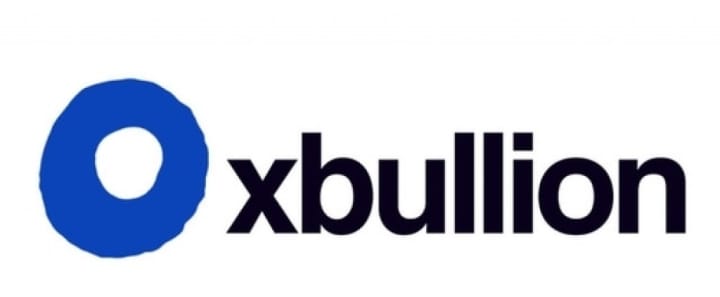Stock Trading – Entry 11
Simple Reviews of Two Shocking Blockchains

There are blockchains. There is hype. There is money. There are exchanges. There are digital wallets. There is investment potential. Ok, let’s pretend I have a few hundred or a few thousand dollars and I am going to look at two blockchains as real, potential investment opportunities. Let’s go.

So according to coinmarketcap.com, GoldMint (MNTP) is all about there being gold and ownership of that gold can change, but who wants to drive trucks around with gold in them all the time? Just leave it be in one place and simply transfer the ownership because the intent is for no one to own the gold to melt it down and make something out if it. Does this sound like a federal reserve type system to you, where a regular currency is backed by real gold? It sounds that way, but let’s scratch the surface entirely via my own perspective and opinion based on information at the time of publishing this article.
First question, where does the gold come from for this blockchain’s use case? The following picture shows you where:

That’s right, the gold supposedly behind this blockchain is in a big vending machine type thing in a pawn shop or similar place. My question is, if you have a gold object you need to sell, would you simply dump it in a machine like this to get some money or would you actually want talk to a person to verify the gold and negotiate the price? Do you want to deposit gold for safe keeping in a box like this? Are pawn shops the only way people can turn cash into gold nowadays?
Then there’s the caveat that, due to regulations, they will likely not be able to give you the actual gold you supposedly own through this blockchain. Yup, hands off for most of us.
But hang on, the use case is facilitating transactions based in some way on gold ownership. If I was involved in that business or a pawn shop (which I am not) and I see some kind of trend where such a use case would eventually take off, then I would want to become an early-adopter. Getting in early would allow me to see gains as the reserves and network size grows (kind of like amazon's push for digital platforms and infrastructure before it's value sky-rocketed). Meanwhile, as things grow the company itself can skim off the top while offering slight discount to token holders (AKA investors in this blockchain). Is that whole model something I see as eventually taking off (AKA market adoption)? If so, then that is a use case I can buy into and hold until the anticipated adoption.
From my vantage point, I do not see that model as taking off, so I will not invest in this blockchain. That said, I might be able to make money off this as a penny trader. However, I am neither interested in being glued to my computer to watch for tiny glitches in price nor am I willing to spend a lot on automated penny trading software. So, I am not going to go into any depth analyzing that approach to investing in this article. So for both potential investment approaches, I am not going to buy GoldMint.
The point with showcasing this blockchain is: I, as an investor, need to get past the hype of any blockchain and examine its use case.
It’s easy. I only needed to do a very little bit of internet research to see if it made sense for my investment strategy (kind of like the sell out lines I described in the first article in the series). Ok, onto the second blockchain.

Right off the bat, I see in coinmarketcap.com’s about section that this blockchain, xbullion, is connected to the Ethereum blockchain. That means big companies and banks are likely involved – and kudos to them for experimenting to figuring things out. The upside is security, both in the actual gold reserves as well as the verification and auditing of those reserves.
There’s one quirky catch I see with this one. Each token (AKA 1.0 units of this blockchain) is tied to a specific amount of gold. How does that get maintained? Forget that question, I am more interested in the apparent violation of one of the supposed main tenants of blockchains: you cannot increase the quantity of a blockchain. Newsflash #6: Having a fixed quantity of a blockchain is a feature of only some blockchains (e.g. Bitcoin). (You can read up on the basics of centralized vs decentralized blockchains in this article.)
That’s right; why would a big company or bank want to get in on controlling inflation for a valuable commodity or being able to print money even when it comes to blockchains (AKA digital currencies)? Ok, I admit, that was cynical of me to ask. However, this gets into the whole concept of Central Bank Digital Currencies (CBCD for short) that are more simply known as blockchains setup and controlled by financial institutions (not just banks).
What are they banking on? According to this article, they are expecting a run. They claim that rocketing demand to use silver in green technology will put strains on it being used as a financial security (like being able to cash in gold in exchange for dollars). So, they spread the silver around the world inside secure vaults and let token holders trade ownership of said silver without a truck of silver coming by to drop it off (when you buy) and pick it up (when you sell). Newsflash #7: There is always preamble in a blockchain’s description, but it is largely opinion and perspective – meaning it only needs to be loosely based on reality or a possible reality. I mean, articles like that one are not designed to instil panic so people buy, right?
With regular currencies, banks tend to be a safe investment option so long as they have very sound investment practices and tend to be aggressive with obtaining greater market shares within legally imposed limits. In contrast, bank-owned blockchains like xbullion strike me as simply ways for a big company (or group thereof) to gain control over key market functions in a way that can financially benefit them. If xbullion gets adopted, then those organizations can circumvent governments by storing items of value (e.g. silver) in other jurisdictions as well as dictate access to said item of value (“use our blockchain or do without”). Hey, you cannot blame them for trying to evolve without changing their point of view....
The point with showcasing this blockchain is: I, as an investor, do not look at any blockchain like I would stocks.
On a side note, I must say that I am dismayed that people are intentionally repeating history with their sole intent of generating power and wealth through their approaches to setting up blockchains involved with currencies and precious metals. That doesn't strike me as so new-agey to me....
So there you have it; examining use cases for blockchains requires a different perspective from picking stocks. Read on for future articles in my stock trading journey.
About the Creator
Richard Soulliere
Bursting with ideas, honing them to peek your interest.
Enjoyes blending non-fiction into whatever I am writing.






Comments
Richard Soulliere is not accepting comments at the moment
Want to show your support? Send them a one-off tip.